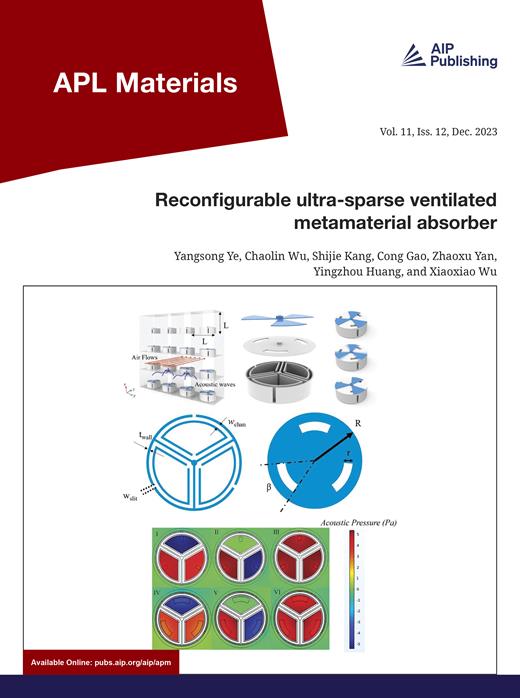The origin of magnetic ordering and reduced mobility in KTaO3-based 2DEGs: Interfacial interdiffusion
IF 5.3
2区 材料科学
Q2 MATERIALS SCIENCE, MULTIDISCIPLINARY
引用次数: 0
Abstract
Recently, KTaO3 (KTO)-based 5d two-dimensional electron gases (2DEGs), characterized by robust spin–orbit coupling, have emerged as promising candidates for future spintronic devices. However, the carrier mobility of KTO-based 2DEGs is typically lower than that of SrTiO3-based 2DEGs, which limits their further development. It is imperative to explore the underlying causes of diminished carrier mobility and devise strategies to augment it. In addition, the genesis of magnetism within KTO-based 2DEGs remains ambiguous. In this study, the 2DEG within the amorphous-EuTiO3/KTO (a-ETO/KTO) heterostructure demonstrates a high electron mobility of 289.1 cm2 V−1 s−1, which exhibits a significant decrease as the film growth temperatures increase. This decrease can be primarily ascribed to electron scattering by impurities, which is induced by the amplified interfacial element interdiffusion at a higher film growth temperature. In addition, the magnetism of 2DEGs for samples grown at different temperatures shows an increasing trend with growth temperatures, which is predominantly derived from the interdiffusion of Eu atoms. This study provides an in-depth analysis of the origin of magnetic ordering and reduced mobility in KTO-based 2DEGs, which will promote the further development of 2DEGs for future applications in electronic devices.KTaO3 基二维电子元件中磁性有序性和迁移率降低的原因:界面相互扩散
最近,以 KTaO3(KTO)为基础的五维二维电子气体(2DEG)以强大的自旋轨道耦合为特征,成为未来自旋电子器件的理想候选材料。然而,基于 KTO 的二维电子气体的载流子迁移率通常低于基于 SrTiO3 的二维电子气体,这限制了它们的进一步发展。当务之急是探索载流子迁移率降低的根本原因,并制定增强载流子迁移率的策略。此外,KTO 基 2DEG 内磁性的成因仍不明确。在这项研究中,非晶-EuTiO3/KTO(a-ETO/KTO)异质结构中的 2DEG 显示出 289.1 cm2 V-1 s-1 的高电子迁移率,但随着薄膜生长温度的升高,迁移率显著降低。这种下降主要是由于杂质引起的电子散射,而在较高的薄膜生长温度下,杂质会放大界面元素的相互扩散。此外,在不同温度下生长的样品的二维电子元件的磁性随着生长温度的升高呈上升趋势,这主要源于 Eu 原子的相互扩散。本研究深入分析了基于 KTO 的二维电子元件的磁有序性和迁移率降低的原因,这将促进二维电子元件的进一步发展,使其在未来的电子器件中得到应用。
本文章由计算机程序翻译,如有差异,请以英文原文为准。
求助全文
约1分钟内获得全文
求助全文
来源期刊

APL Materials
NANOSCIENCE & NANOTECHNOLOGYMATERIALS SCIE-MATERIALS SCIENCE, MULTIDISCIPLINARY
CiteScore
9.60
自引率
3.30%
发文量
199
审稿时长
2 months
期刊介绍:
APL Materials features original, experimental research on significant topical issues within the field of materials science. In order to highlight research at the forefront of materials science, emphasis is given to the quality and timeliness of the work. The journal considers theory or calculation when the work is particularly timely and relevant to applications.
In addition to regular articles, the journal also publishes Special Topics, which report on cutting-edge areas in materials science, such as Perovskite Solar Cells, 2D Materials, and Beyond Lithium Ion Batteries.
 求助内容:
求助内容: 应助结果提醒方式:
应助结果提醒方式:


